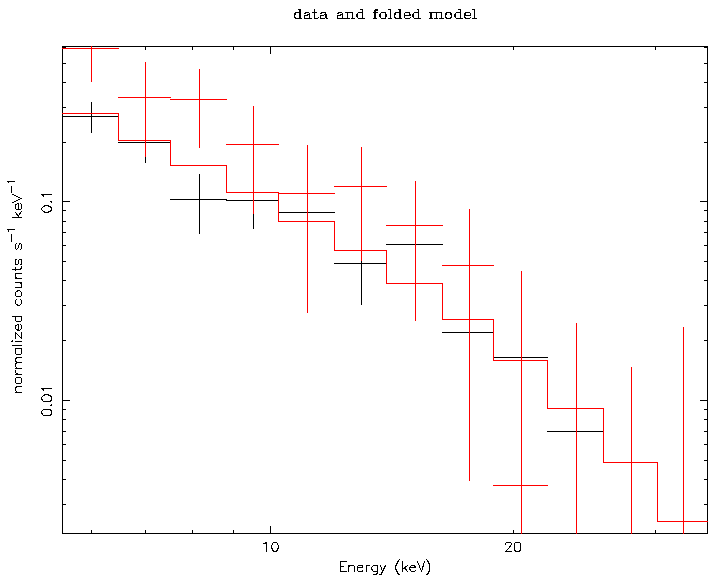 |
It can happen that after the IMA level is done, you find that there is one more source from which you would like to extract a spectrum (e.g. you find a weak source which appears only in the mosaic image or you want to ``fix'' the position of a strong source with user catalog). In this case, you can ``force'' the script to extract the spectrum from a given position on the sky. For this, you need to redo the analysis from the CAT_I step, after inserting your source in the user catalog with FLAG=1.
As an example, let us extract the spectrum of the source 4U 1722 30, which is clearly visible in the mosaic image of the Galactic Center region (Fig. 16) but which was detected only marginally at the imaging step. For this case, the SOURCE_ID, NAME, RA_OBJ, DEC_OBJ are J172733.2-304807, 4U 1722 30, 261.8883 and -30.80194 , respectively. Fill the corresponding line in the file user_cat.fits, update column FLAG (FLAG=1), and run the jemx_science_analysis with the user-defined catalog, as explained above.
The resulting files scw/RRRRPPPPSSSF.001/jmx2_srcl_spe.fits will contain a row with the spectrum of 4U 1722 30. The quality of the single ScW spectra is not very high, because of the short integration time (see Fig. 20). However, with the help of the spe_pick command (see previous sub-section) you can sum up the spectra of individual ScWs and obtain a better spectrum based on longer integration time (Fig. 20).
Sources marked with FLAG=1 in the user catalog will be included in the flux fitting procedure, and their derived fluxes will appear in the srcl_res file. You can introduce many FLAG=1 sources simultaneously, and you will get fluxes estimates for all of them in srcl_res. The flux values for the FLAG=1 sources are not derived from a fit including all these sources simultaneously. Such a fit might easily be highly unstable. Instead, the flux estimate for each of the FLAG=1 sources will be extracted from a separate fit for this specific source together with the ``basic source set'' i.e. the strong sources found by j_ima_iros.
The maximum number of FLAG=1 sources which will be accepted by j_ima_iros in the analysis of a specific science window is 75. However this does not mean that you cannot work with a 'user catalog' with 200 FLAG=1 sources. What counts for j_ima_iros is the number of FLAG=1 sources which falls inside the 10 degree diameter field-of-view for the current science window. The program will not fall over if there are more than 75 FLAG=1 sources visible, it will simply only accept the first 75 visible FLAG=1 sources in the user catalog.
Under special circumstances you may want to force a specific source into all the fits of single science windows (for all the FLAG=1 sources). This can be done for very weak sources by setting FLAG=3, but it is not recommended as a general practice. A maximum of three FLAG=3 sources will be extracted from your user catalog - additional FLAG=3 sources will be neglected.
 |